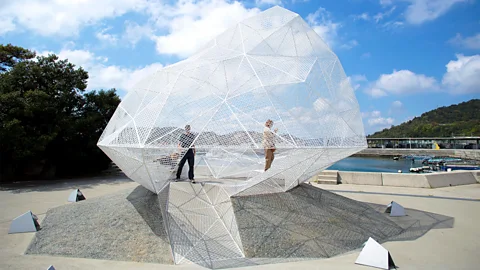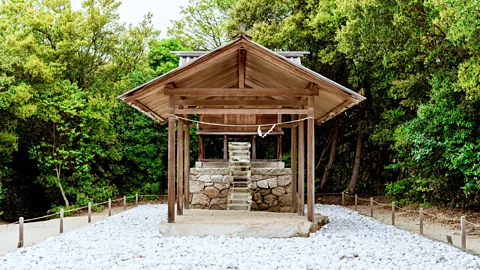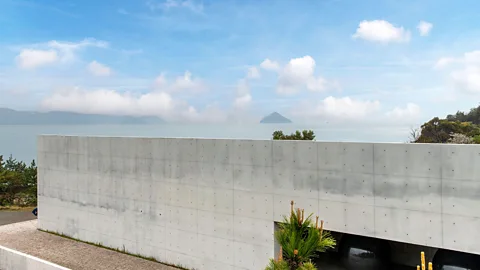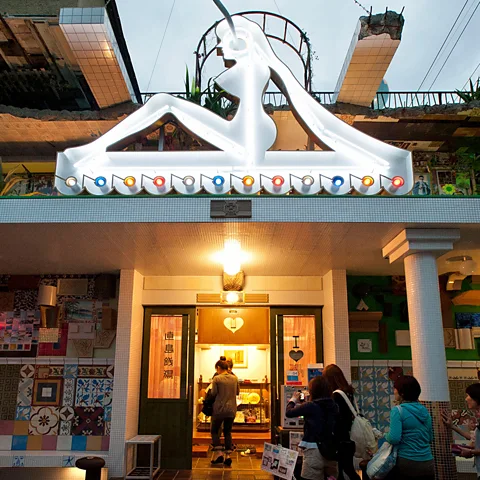The Japanese island that was saved by art
 Alamy
AlamyOnce polluted and suffering from depopulation, Naoshima has become Japan's hottest contemporary art enclave – and there are signs that life there may be finally rebounding.
Shinichi Kobayashi has idyllic memories of growing up on Naoshima, one of the nearly 3,000 islands scattered across Japan's Seto Inland Sea.
"We would go clam digging," said the 75-year-old, who became the island's mayor in 2018. "During the summer, I would spend entire days swimming in the sea, catching turban shells and fish, getting deeply tanned."
"I don't recall seeing any foreign visitors," he added.
Kobayashi's home island is no longer off the tourist radar – thanks to the power of modern art. Since the 1989 launch of what has become Benesse Art Site Naoshima – a multi-island art initiative initiated by billionaire Sōichirō Fukutake – more than 500,000 visitors now flock annually to Naoshima, whose fishing villages, rice fields and craggy coastlines have become the canvas for mesmerising art installations and ambitious museums. In 2010, the Setouchi Triennale launched. The contemporary art festival – which is now one of Japan's foremost international art events – attracts roughly one million visitors to the region each Triennale season. The sixth edition kicked off on 18 April this year and will run until 9 November; the longest Setouchi Triennale ever.
 Alamy
AlamyForty years ago, few would have imagined such a transformation. In the early 20th Century, Naoshima had cemented its reputation as a copper smelting hub, but by the 1980s, it was heavily polluted; the raw, rocky land around the Mitsubishi Materials industrial plant denuded of vegetation. The population dwindled dramatically as the young left to seek opportunities in larger cities.
Fukutake's father, publishing magnate Tetsuhiko Fukutake, and Naoshima's then-mayor, Chikatsugu Miyake, aspired to revitalise the bleak area by founding a children's campground. Tetsuhiko died before the project was completed, leaving it to his son. Shocked by Naoshima's pollution, the younger Fukutake purchased a large swathe of the island's unblighted south side. His new plan: to transform the region by erecting attractive museums against its serene coastal landscapes. To enact his vision, he tapped Osaka-born architect Tadao Andō, who had become known for designing buildings that blended seamlessly into their surroundings.
"I was surprised by the idea and thought it would be difficult to achieve," Andō said in a 2018 interview where he and Fukutake discussed the project's origins. "It was so inconvenient! Who would come here?"
"This project began as an act of resistance," explained Fukutake in the interview. "It was my conscious intention to build a kind of heaven on Earth – the very first paradise that harmonises art, nature and the local community."
 Alamy
AlamyIn 1989, Andō designed the Naoshima International Camp, fulfilling the elder Fukutake's vision. In 1992 came the Benesse House Museum, a hotel and contemporary art museum housing works by luminaries including Bruce Nauman, Frank Stella and Hiroshi Sugimoto.
The Best of 2025
Naoshima was named one of BBC Travel's 25 best places to visit in 2025, a list highlighting destinations that are not only welcoming visitors, but using tourism as a force for good. See the full list here.
The island's evolution into a globally renowned open-air museum and international contemporary arts hub was all but assured in 1994, when Yayoi Kusama's yellow and black-spotted Pumpkin was added to the landscape's growing collection of public artworks. This iconic work has since become emblematic of Naoshima itself.
"[The] initial goal wasn’t to promote tourism," said Soichiro Fukutake's son, Hideaki, who now helms the Fukutake Foundation. "But rather to revitalise the region through art and help locals feel a renewed sense of pride in their hometown."
But the mission hasn't just been about building anew. Since 1998 and the start of the Art House Project in the nearby fishing village of Honmura, "using what exists to create what is to be" has been a guiding principle, leading to many defunct buildings on Naoshima and the neighbouring islands of Teshima and Inujima to be reborn as art. These include two projects by artist Shinrō Ōtake: Haisha, an old dentist's building transformed with collage, reclaimed materials and a partial giant copy of the Statue of Liberty; and Naoshima Bath "I♥︎湯", a public bathhouse now plastered in a patchwork of patterned tiles on the exterior to the full-scale model of an elephant striding across the dividing wall between the male and female bathing sections.
 Alamy
AlamySome locals were initially sceptical about the general appeal of such artworks. In the 1980s Toshio Hamaguchi worked for Naoshima's town office and guided executives from Fukutake's company around the island when the International Camp was first being planned. "I did not expect that we would attract many people by such a project, and particularly by art," recalls the retiree. "However, we have so many visitors thanks to art now."
Since his initial commissions on Naoshima, Andō has designed nine other projects on the island, including the Chichu Art Museum, of which a large portion is built directly into the earth; and the Naoshima New Museum of Art, opening 31 May, which will showcase contemporary art from Japan and Asia. The inaugural exhibition – titled From the Origin to the Future – will feature works by the likes of Japan's Takashi Murakami and Makoto Aida, Cai Guo-Qiang from China and the Korean artist Do Ho Suh.
Like the Chichu Art Museum, the Naoshima New Museum of Art blends seamlessly with the environment by burying two of its three storeys beneath the ground. "It's one of the most ambitious and exciting projects we've undertaken," said Hideaki Fukutake.
Plan your trip
Get there: From Kansai International Airport, take the Shinkansen to Okayama. Get the local JR line to Uno and catch the Naoshima ferry at Uno Port. (~ 4 hours).
Where to stay: Indulge at Benesse House and the luxury contemporary ryokan Roka, or rough it at beachside camp Tstutsuji-sō. Book well in advance, particularly during festival times. Alternatively, stay in Takamatsu on Shikoku or Uno on Honshū; frequent ferries connect to the island.
Where to eat: The Museum Restaurant Issen at Benesse House serves kaiseki made with island seafood. Also try Naka-Oku and Apron Café in Honmura for delicious, healthy meals.
Tickets: Book online for timed visits to Naoshima's key art sites.
The success of Benesse Art Site Naoshima in attracting visitors to a once-neglected location has been an inspiration for similar projects in other rural parts of Japan. Art Base Momoshima on the island of Momoshima is helmed by renowned conceptual artist Yukinori Yanagi, while on Ōmi-shima, another Inland Sea island, architect Toyō Itō has established the Toyō Itō Museum of Architecture.
As mayor, Kobayashi notes the economic benefits: "Thanks to the increasing number of visitors, guesthouses and restaurants have flourished, helping make everyday life more vibrant for the locals."
He added: "That said, we've also seen some changes, like more people locking their doors, which wasn't common in the past… For me, what matters most is that the residents can live cheerfully, energetically and happily."
Threatening this is the island's persistent issue of depopulation: Naoshima currently has 3,000 residents, around half the number it had in the 1980s. "Personally, I strongly wish to increase it," said Kobayashi. "Even if just by one person."
More like this:
• How the bullet train transformed Japan
• How Japan's tsunami-ravaged coastline is being transformed by hope
However, there are glimmers of hope; a 2024 Asahi Shimbun article cited that though the island's population was in decline in 2022, the number of newcomers has risen slightly but steadily each year since. Over the past five years, 500 people – mainly married urban couples in their 30s and 40s – moved to the island, attracted by its unique artsy beauty. Many Benesse Art Site Naoshima staff have relocated to the island while others have come to fill jobs in the booming hospitality industry – so much so that Naoshima is now facing a housing shortage. Mitsubishi Materials has also significantly cleaned up its copper smelting operations, improving the overall quality of life.
Speaking at a conference on Naoshima in 2023, Eriko Ōsaka, a respected curator and general director of The National Art Center, Tokyo, credited Benesse Art Site Naoshima organisers with changing the island's image "from being a negative one to a positive one through the power of art".
In Ōsaka’s opinion, visitors to Naoshima "can experience serendipity that they can find nowhere else and discover something unknown within themselves". For her, the success of Benesse Art Site Naoshima means that some of those islanders who have moved away "will come back one day".
--
If you liked this story, sign up for The Essential List newsletter – a handpicked selection of features, videos and can't-miss news, delivered to your inbox twice a week.
